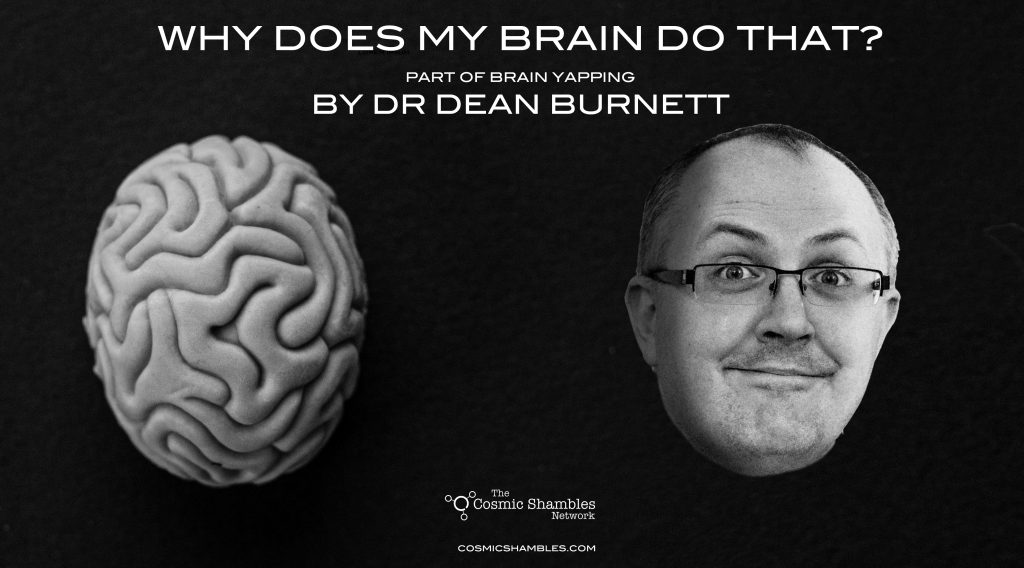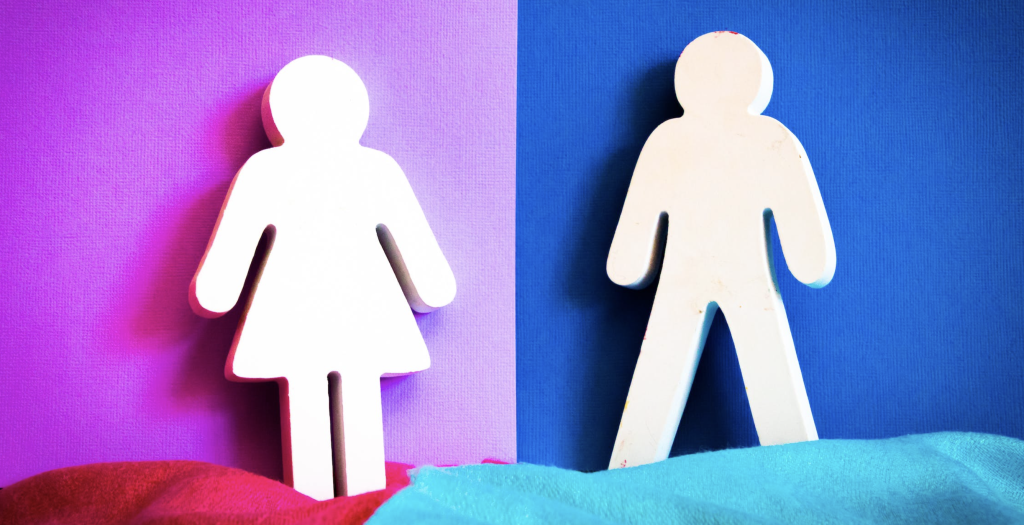BRAIN YAPPING
DR DEAN BURNETT
Why Does Our Perception of Pain Vary?
Why Does My Brain Do That PreviewIn this series, bestselling neuroscience author Dr Dean Burnett answers Shambles Patreon subscribers questions about their brains. A sort of neuroscientific agony aunt if you will.

An Anonymous Shambles Patreon asks: Why isn’t pain a consistent thing? Why isn’t an arm, broken in the exact same way, not the same amount of pain for two people? Or is the ‘pain’ objectively the same but our perception of it differs.
Thanks for the question, Ann. Interesting surname, too.
So, pain is a complex, variable thing at even the most fundamental levels. There are several different types of pain receptors, and pain conducting neurons, that run throughout our body. They result in different variations of pain, like thermal (burning from heat) or mechanical (injury from pressure like pinching, or impact) pain.

These are conducted through the nervous system at different speeds, thanks to the different neural fibres involved. Some pain signals travel at the ‘normal’ rate of tens of metres a second, so we experience them instantaneously. Hence we unknowingly touch a very hot oven, we immediately recoil. Other pain signals are amongst the slowest in the body, which is why you get the slow, “secondary” pain. The dull aches or throbs after an injury, or burn.
So, even at the most basic biological level, the typical human perceives pain in a range of different ways as it is. And when you invoke the variability between different people, even if they’d be classed as ‘normal’ in every feasible way, the differences in pain and how it’s experienced become even more stark.
You’re right that a lot of it is down to our perception of pain, which can vary much more from person to person. This is because it’s shaped by multiple factors, including genetics, development, experiences, even society and culture. These help shape our pain threshold (the minimum intensity required for a person to perceive something as painful) and our pain tolerance (the maximum intensity of pain we can endure). These are different things. For instance, you can have a high threshold and low tolerance, where it takes a relatively high amount of pain for you to perceive it as such, but once you do perceive it, you can’t handle much before it’s unbearable.

At the most fundamental level, differences in pain perception are shaped by genetics. The chemical signallers, the protein receptors in our neurons, the nerve fibres that detect and convey pain signals, these are all determined by genetic components (like everything else in our body). And these genetic factors have a lot of variability, which affects our ability to experience pain.
Indeed, in some cases, people’s genes are expressed in such a way that leads to Congenital Insensitivity to Pain, meaning they can barely feel pain at all. Interestingly, this doesn’t mean that such people cannot recognise pain and distress in others, because they can, even though they’ve never felt similar themselves. This underscores how physical and psychological/emotional pain are distinct things in our brains.
But even assuming we have a genetic profile that gives us a ‘normal’ ability to perceive pain, the type of pain we end up dealing with throughout our lives affects our perception of it. Because our brain is flexible and adaptable, and it changes depending on what it needs to do.
An obvious example of this is spicy food. Spicy food contains capsaicin, a literal pain-producing chemical, and yet we humans will insist on consuming it in great quantities. And if you’re one of those types who consumes spicy food as often as possible [raises hand], then you’ll notice that you will go for ever-spicier options as time progresses. What once felt like it would burn the roof of your mouth off now has all the kick of a flat lemonade. Because our brain has had time to adapt to the ‘pain’ caused by our spicy food consumption.
It’s a bit more complex than that, however. Because rather than tolerance, sometimes painful experiences lead to sensitisation. This is where an injured or pain-experiencing area of your body becomes more sensitive to pain, not less. This makes sense, as pain means danger, harm, or damage. And if whatever caused it happens again, you want to know about it right away, so your brain makes that are more sensitive to pain. This is why people experiencing trauma or injury are given morphine as soon as possible; to prevent their brains making the injury site hyper-sensitive to pain.
These are just some of the basic ways in which pain perception differs between individuals. And now, let’s get onto the stuff that’s most likely to generate angry comments.
Sex is known to be a significant factor in perception of pain. By which I mean, what sex you are, not the sex you have. That can indeed lead to pain perception, but as long as everyone involved is consenting, I’m not going to judge.
So, while it’s often said that women have the higher pain tolerance because they are the ones who go through labour and all that involves, the evidence says the opposite. It’s men who generally have the significantly higher pain threshold and tolerance.

Much of how we experience pain is influenced by the chemicals and hormones in our bodies, and because men and women are beholden to different suites of hormones, their perception of pain inevitably differs. And it’s usually women who are more sensitive to it, given their more complex hormonal cycles etc. Meanwhile, low testosterone in men is linked to heightened pain perception.
But it’s not just the chemical differences, but the cultural, societal ones. Men are encouraged to do more physically demanding things, like contact sports, where impact, injury and pain are regular experiences. There’s also the whole ‘macho’ thing, where admitting weakness or fragility is heavily discouraged, meaning many a male will feel compelled to just grit their teeth and pretend all is fine when hurt. It’s dumb and totally unnecessary, sure, but it does still mean the male brain gets a lot more practice putting up with pain.
Conversely, women are allowed/expected/coerced into showing vulnerability, and fragility, which (leaving aside all the negative outcomes of this) would lead to more honest expressions of pain.
Obviously this by no means applies to everyone, but gender stereotypes are still widespread, and in this case they literally hurt.
Finally, it’s important to note that people’s pain tolerance can change, depending on their current situation. And nowhere is this starker than during pregnancy and labour. When a pregnant woman goes into labour, her pain tolerance goes right up. It’s easy to see why we’d evolve this trait.
You know those ‘labour pain simulator’ machines, that are often out on men so they can feel what a woman’s going through during the process? It’s invariably videoed and put online for easy content. Well, those technically aren’t valid. Whatever pain is being inflicted on the volunteering (one hopes) men, it doesn’t come with the accompanying hormone-chemical elevation of pain tolerance that labour brings.
I would say “It’s all just a laugh, as long as nobody gets hurt”, but that would be defeating the point somewhat.
Dean discusses pain and sex differences, and more, in his new book, out now
 Dr Dean Burnett is a neuroscientist and best selling author of such books as The Idiot Brain and The Happy Brain. His former column Brain Flapping for The Guardian (now Brain Yapping here on the CSN) was the most popular blog on their platform with millions of readers worldwide. He is a former tutor and lecturer for the Cardiff University Centre for Medical Education and is currently an honorary research associate at Cardiff Psychology School and Visiting Industry Fellow at Birmingham City University. He is @garwboy on Twitter.
Dr Dean Burnett is a neuroscientist and best selling author of such books as The Idiot Brain and The Happy Brain. His former column Brain Flapping for The Guardian (now Brain Yapping here on the CSN) was the most popular blog on their platform with millions of readers worldwide. He is a former tutor and lecturer for the Cardiff University Centre for Medical Education and is currently an honorary research associate at Cardiff Psychology School and Visiting Industry Fellow at Birmingham City University. He is @garwboy on Twitter.
If you would like to reuse this content please contact us for details
Subscribe to The Cosmic Shambles Network Mailing list here.


